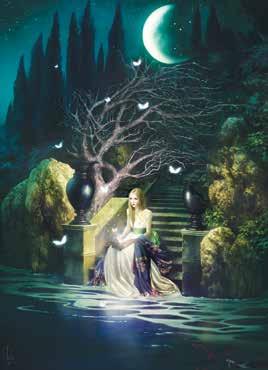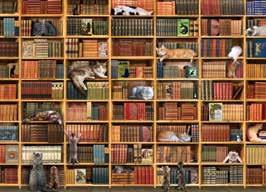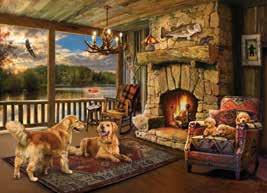
6 minute read
cards, grid pad, score pad
p a r t of the image at actual size. a
80176 | Rapture| © Mélanie Delon | Tate & Company Licensing

80262 | Crystal| © Mélanie Delon | Tate & Company Licensing 80177 | Trapped| © Mélanie Delon | Tate & Company Licensing


80175 | Onde | © Mélanie Delon | Tate & Company Licensing 80261 | Ten Wishes | © Mélanie Delon | Tate & Company Licensing


80232 | | Unicorn © David Penfound a part of the image at ac t u a l s i ze.
i m age at actual size. t h e of a part

80080 | | Dragon’s Lair © Anne Stokes | art ask agency

80247 | | Abby’s Dragon © David Leri

80264 | | Fire Swords © Ciruelo | Tate & Company Licensing


80104 | | Dragonforge © Matthew Stewart 80105 | | Waterfall Dragons © Matthew Stewart

80250 | Red Dragon’s Treasure| © Ciruelo | Tate & Company Licensing
Jane Shasky paints beautifully detailed watercolors celebrating plant, insect, and bird life. Save the Bees features bee–friendly flowers and herbs as well as fascinating bee facts.
Another image by Jane Shasky can be found on page 49.
Chives flower early, cheerfully producing nectar for spring bees set to fly.
Bee health is a direct sign of the ecosystem's health. A third of the world’s food depends on bee pollination.
"The keeping of bees is like the direction of sunbeams." _ Henry David Thoreau
"The hum of bees is the voice of the garden." _ Elizabeth Lawrence Planting a garden or pots of bee-friendly flowers is one of the easiest and most beautiful ways to help.
Scabiosa blossoms offer a feast of nectar for bees.
Snowdrops are low maintenance bulbs offering fresh nectar for early-bird bees.
For shady areas, the winter-spring Hellebore is a rich source of nectar and pollen. Hellebore Zinnias
Cornflowers (bachelor’s buttons) are popular with bees due to their high levels of nectar. Gaillardia
Gaillardias are not scented, but do not fade and have a long blooming season that provides food, rest, and shelter.
"How doth the little busy bee improve each shining hour, and gather honey all the day from every opening flower!" _ Isaac Watts
An exhausted bee can be revived with a mixture of water and sugar placed nearby. Peonies
Bees navigate using a solar compass, and polarized light.
A worker bee will make 1/10 a teaspoon of honey in her lifetime.
We were mint to bee...
Primrose
Parrot tulips adjust their blossoming to less competitive pollination times.
Zinnias are abundant and colorful late-season bloomers that help prepare bees for the winter.
R ose
Herbs, easy to grow in pots, make a wonderful garden addition for bees, as well as for cooking! Bees are the most common pollinator of roses . Lavender has a strong scent and color that are alluring to bees.
Bees cannot see red, but love purple, blue, yellow, white, and ultraviolet. It takes 2 million tapped flowers to make 1 pound of honey. Forget-me-not
Forget-me-nots direct a bee’s journey by the fading of their yellow centers once pollinated.
Poppies do not produce nectar, but are an abundant source of easily accessible pollen.
Peonies with single petal rows provide better bee access.
The sunflower’s head is comprised of multiple smaller flowers, providing a playground of nourishment for bees. The primrose resonates with a bee’s buzz and reacts by increasing its sugar output.
80366 | Save the Bees | © Jane Shasky
e apple ķage n
P i Hollyhoc k
The lilac’s dense clusters invite bees to collect more nectar with less flying. Foxglove, quintessential to a country bee garden, is toxic to pets.
Bees love sunshine!
Honeybees will perform a waggle dance to share the location of a successful forage.
Bees love the fragrance of bee balm, from the mint family.
A honey bee visits 50 to 100 flowers during one collection trip.

80120 | Chicken Quotes | © Ashley Davis

80096 | Dog Quotes| © Lucia Guarnotta | J.Q. Licensing LLC

80015 | Butterfly Collection| © Carl Brenders | Ansada Licensing Group LLC

80095 | Cat Quotes | © Lucia Guarnotta | J.Q. Licensing LLC a piece of the image at actual size .
Painted over 40 years ago, these beautifully detailed and faithful studies of butterflies are by acclaimed wildlife artist Carl Brenders.
a part of the image at actual size.


80354 | Sewing Room| © Giordano Studios LLC

80216 | The Cat Library | © Cobble Hill Puzzle Company Ltd.

80072 | Fur Ball | © Cobble Hill Puzzle Company Ltd. 80124 | Library Cat| © Cobble Hill Puzzle Company Ltd.


80049 | Terrarium Cat | © Cobble Hill Puzzle Company Ltd.

80017 | Marmaduke by Geoffrey Tristram| © Sue Hammond, U.K. | Porterfield’s Fine Art Licensing

80315 | Sweet Dreams | © Joelle McIntyre | Blue Sky Art & Design

80316 | Comfy Cat| © Joelle McIntyre | Blue Sky Art & Design 80234 | Flora | © Geoffrey Tristram | Porterfield’s Fine Art Licensing


80073 | Bird Watchers | © Persis Clayton Weirs | Wild Wings LLC

80197 | Home Is Where the Dog Is| © Rosemary Millette | Wild Wings LLC 80038 | Yorkies Are My Type| © Cobble Hill Puzzle Company Ltd.


80039 | Westies Are My Type| © Cobble Hill Puzzle Company Ltd.
80132 | Pug Family| © Russell Cobane | Licensed by MGL


80257 | Dog Day Afternoon| © Greg and Company LLC

80271 | In the Doghouse| © Jerry Gadamus | J.Q. Licensing LLC 80005 | Cabin Porch | © Greg and Company LLC


80294 | Lakeside Cabin | © Greg and Company LLC






